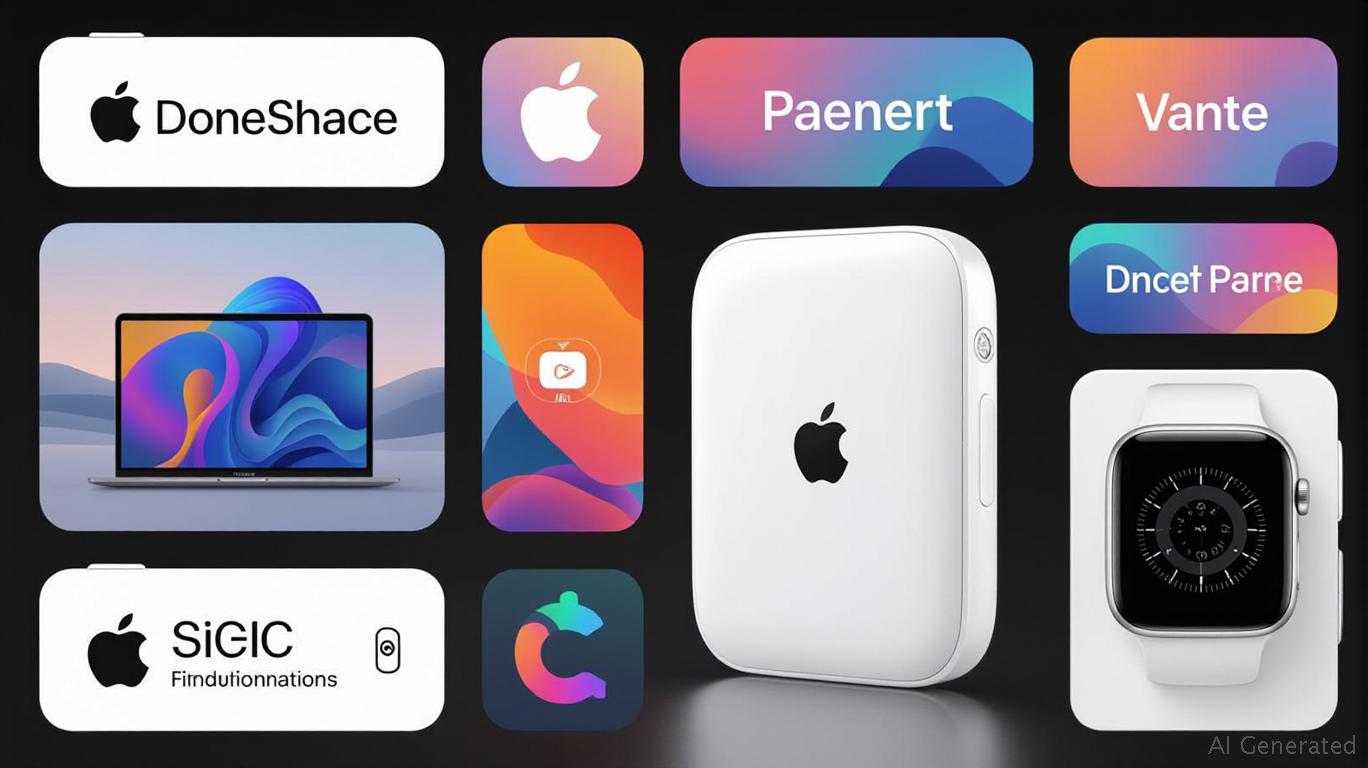OpenAI's Design Play: A Blueprint for Tech Disruption?
The acquisition of Jony Ive's io Products by OpenAI marks a pivotal moment in the evolution of artificial intelligence from a software-centric field to a full-stack technology play. By merging its AI prowess with the legendary design legacy of the man behind the iPhone and iPad, OpenAI has signaled its ambition to redefine how consumers interact with technology. This deal, valued at $6.5 billion and finalized in May 2025, represents a bold strategic shift—one that could either cement OpenAI's dominance or become a cautionary tale of overreach. Here's why investors should take note.
Ask Aime: OpenAI Acquires Jony Ive's io Products, Transforming Tech Landscape
The Synergy: AI Meets Industrial Design
OpenAI's core strength has always been its software: advanced language models, generative AI, and the infrastructure to train them. Io Products, meanwhile, brings a team of 200 engineers, designers, and researchers led by Ive and his firm LoveFrom. Their expertise lies in crafting devices that are not just functional but culturally resonant. The collaboration's first rumored product—a context-aware, pocket-sized device—hints at a vision beyond today's wearables like smart glasses or earbuds. Instead, it suggests a return to the “invisible computing” ethos of Ive's
days, where technology recedes into the background while enhancing human experience.This synergy is critical. Historically, tech giants like Apple have leveraged design to differentiate their AI products (e.g., Siri's integration into iPhones). OpenAI, by contrast, has relied on partnerships with hardware manufacturers like
(Surface) or Sony (PlayStation). Now, it gains the capability to control both the AI brain and the physical body of its products.
Market Disruption: Can OpenAI Shake Up the Hardware Giants?
The stakes are high. The global AI hardware market is projected to reach $250 billion by 2030, with incumbents like Apple, Google, and Microsoft entrenched in consumer electronics. OpenAI's entry could disrupt this landscape if it can deliver a product that solves longstanding user pain points: complexity, privacy concerns, or lack of intuitive interaction.
Consider the iPhone's disruption in 2007: it combined touchscreens, app ecosystems, and industrial design to redefine mobile computing. OpenAI's hypothetical device—rumored to use contextual awareness to anticipate user needs without explicit input—could similarly challenge the status quo. However, execution is everything. The trademark dispute over the name “io” and potential delays (comparable to Grand Theft Auto 6's protracted development) underscore the risks of ambitious hardware projects.
Note: NVIDIA's rise reflects AI's hardware demands, while Apple and Microsoft's stability highlights the risks of entrusting AI to third-party partners.
Risks and Realities
- Regulatory Hurdles: The trademark dispute is just the start. AI hardware often faces scrutiny over data privacy and monopolistic practices. OpenAI's non-profit roots and commitment to “human alignment” may help, but regulatory tailwinds are uncertain.
- Execution Pressure: Hardware is capital-intensive and prone to delays. Even Apple's product cycles have stumbled (e.g., the Apple Watch's early years). OpenAI's inexperience in manufacturing and supply chains could amplify risks.
- Competitor Response: Incumbents won't stand idle. Microsoft's partnership with OpenAI on Azure and Bing already integrates AI into its ecosystem, while Apple's M-series chips and Vision Pro headset aim to lock users into its closed system.
Investment Implications
For investors, the acquisition presents both opportunities and pitfalls. Direct exposure to OpenAI is limited (it remains a private entity), but its ecosystem partners could benefit:
- NVIDIA (NVDA): Supplies the GPUs critical for AI training.
- Cree (CREE): Provides semiconductor materials for advanced chips.
- Luxury Brands: If OpenAI's devices adopt Ive's minimalist aesthetic, firms like LVMH or Coach (Tapestry) might see cross-pollination in premium tech accessories.
Conversely, OpenAI's success could pressure incumbents like Apple or
(GOOGL), whose hardware margins might compress if OpenAI undercuts their design or user experience.Note: OpenAI's valuation is estimated at $29 billion as of 2023; its trajectory depends on monetization of hardware partnerships.
Final Analysis
OpenAI's bet on hardware is as much about culture as it is about profit. By aligning with Ive—a designer who once famously said, “Details matter, it's not just what it looks like and feels like, but how it works”—the firm is staking its reputation on creating products that are as emotionally resonant as they are technically advanced.
For investors, the acquisition is a long-term play. The near-term risks of execution and regulation are significant, but if OpenAI can deliver on its vision, it could become the next paradigm-shifting tech company. The question isn't whether this deal will disrupt markets—it's how much.
Investment Advice:
- Aggressive Investors: Consider overweighting in AI hardware enablers like
- Conservative Investors: Wait for concrete product launches and revenue streams before committing. Monitor regulatory developments closely.
- Avoid: Overexposure to hardware incumbents without clear AI differentiation, such as traditional PC manufacturers.
In the end, OpenAI's success will hinge on whether it can replicate the magic of the iPhone—where software and hardware fused into something greater than the sum of their parts. The world will be watching.

Comments
No comments yet